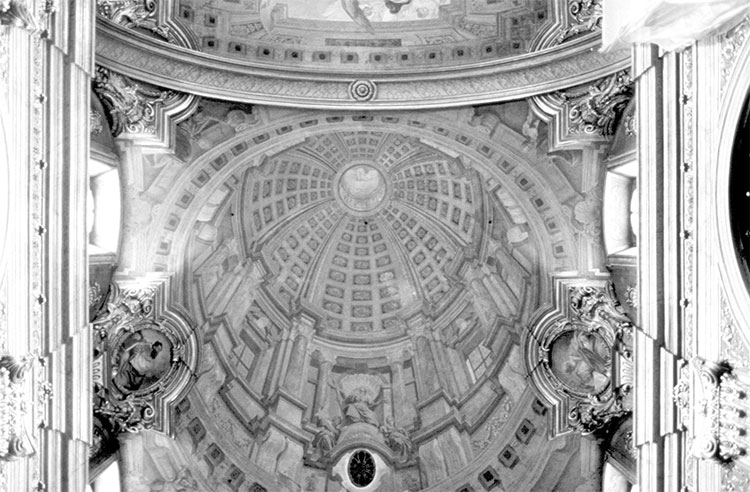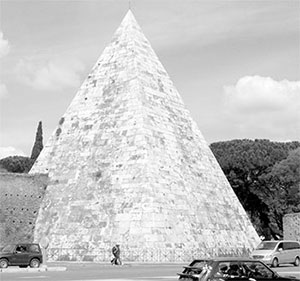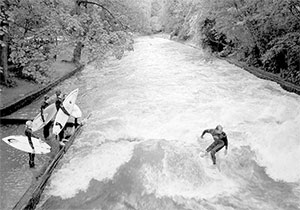Offbeat Europe
This item appears on page 78 of the February 2008 issue.

No one planning a trip to Europe needs to be reminded to see Big Ben and the Leaning Tower. But it’s the unusual experiences that are often the most memorable part of a trip. Study up in advance and you can enjoy places and experiences like these.
EUROPE’S SKINNIEST PARK —Paris’ skinny, 2-mile-long Promenade Plantee park is a narrow garden walk on a viaduct no longer used for train tracks. The elevated park, which cuts through lots of modern condos, gives a fun peek into the workaday lives of Parisians today. Staircases lead to the street level, where artsy, offbeat shops fill the viaduct’s arches. The park runs from place de la Bastille and along avenue Daumesnil to Saint-Mande.
PARIS’ HISTORIC SEWERS — Discover what happens after you flush. This quick, fascinating and slightly stinky visit (a perfumed hanky helps) takes you along a few hundred yards of underground water tunnels in the world’s first underground sewer system. It’s lined with interesting displays, well described in English, explaining the evolution of the world’s longest sewer system. Flush hard: if you lined up Paris’ sewers end to end, they would reach beyond Istanbul.
THE TIDE WENT OUT AND NEVER CAME BACK — Holland is twice as big today as it was 300 years ago. How? By “reclaiming” land from the sea using dikes and windmill-powered pumps. During the process, many tiny islands — home to traditional fishing villages — were stranded high and dry and today stand in the middle of Dutch farmland.
The fishing village of Schotlan, once on an island in the Zuider Zee, is one such village. The village has a now-useless lighthouse, and you can walk right up to a buoy that once bobbed in the harbor. A bent and rusty propeller from a World War II English bomber ornaments the village square — a reminder that when farmers first tilled their new soil, they uncovered more than just muck and mollusks.
TV AND THE DOWNFALL OF TEA — London’s Bramah Tea & Coffee Museum is a hit with aficionados of the brown brews. This small museum passionately tells the story of each drink.
You’ll likely meet the owner, Edward Bramah, who comes from a big tea family. He wants the world to know how the advent of commercial television — with breaks too short to brew a proper pot of tea — required a faster hot drink. In came the horrible English instant coffee. The tea industry countered with minced leaves in tea bags, and “it’s gone downhill ever since.”
SKIING IN EDINBURGH — If you’d rather be skiing, the Midlothian Ski Centre, just outside Edinburgh, has a brush-skiing hill with a chairlift, two slopes, a jump slope and rentable skis, boots and poles. While you’re actually skiing over what seems like a million toothbrushes, it feels like snow skiing on a slushy day. It’s open nearly year-round (except, ironically, when it snows).
Beware: local doctors are used to treating an ailment called “Hillend Thumb” — digits dislocated when people fall and get tangled in the brush.
SKINNY-DIPPING IN DOWNTOWN MUNICH — Munich’s Central Park, the English Garden, offers a variety of offbeat things to explore. Up to 300,000 locals commune with nature here on a hot summer day, many of them naked. Nudism, denoted by the code letters “F.K.K.,” is perfectly legal and widely practiced here — quite a spectacle to most Americans (they’re the ones riding their rental bikes into the river and trees).
Also here, buried far from the nearest stretch of coast, surfers “hang ten” in the rapids of the city’s little river. While seeking their thrills, they provide great entertainment for the ever-present little crowd that gathers to watch from the bridge.
MONK BREWERS — Imagine a fine Bavarian Baroque church at a monastery that serves hearty food and Germany’s best beer in a carnival setting full of partying locals. That’s the Andechs Monastery, crouching happily between two lakes at the foot of the Alps, just south of Munich.
Arrive ready to eat tender chunks of pork, huge soft pretzels, spiraled white radishes, savory sauerkraut and Andecher monk-made beer that would almost make celibacy tolerable. Everything is served in medieval portions; two people can split a meal. Andechs has a fine picnic center offering first-class views and second-class prices.
CHOCO-SIGHTSEEING — Along with its rich culture, Europe is loved for its delicious chocolate. All day long, rivers of molten chocolate work their way through factories into small foil packages. While chocolate factory tours are rare, many welcome visitors with museums, showrooms, video presentations and free tasting rooms.
Chocoholics love the Imhoff-Stollwerck Chocolate Museum in Köln, Germany. Their self-proclaimed “Mmmuseum” takes you on a tour from the origin of the cocoa bean to the finished product. You can see displays on the culture of chocolate and watch treats trundle down the conveyor belt in the functioning chocolate factory, the museum’s highlight.
SALZBURG’S SUPER-SOAKER PRINCE — In Austria, Salzburg’s 17th-century Hellbrunn Castle entertains with a garden full of trick fountains and tour guides sadistically soaking tourists. At the touch of a button, paths and benches turn into fountains and visitors get doused. It’s silly fun, especially with kids on a sunny day.
CHAPEL OF BONES — In Evora, Portugal, a chapel in the Church of St. Francis is decorated with bones and 5,000 skulls. The message over the entrance reads, “We bones in here wait for yours to join us.” This was the work of three monks who thought their interior-decorating scheme would help people meditate on the transience of material things. Seekers of the macabre can find similar bone chapels in Rome, Palermo (Sicily), and Kutna Hora (Czech Republic).
ROMAN PYRAMID — You don’t need to go to Egypt to see an ancient pyramid. Standing 90 feet tall, Rome’s pyramid was built in 12 B.C. as a tomb for the Roman Gaius Cestius, after the Cleopatra and Mark Antony scandal brought exotic Egyptian styles into vogue. Later the pyramid was incorporated into Rome’s city wall.
ROME’S FAKE DOME — Rome’s St. Ignazio church (near the Pantheon) is a riot of Baroque illusions. As you walk into the church, admire the dome. Keeping your eyes on the dome, walk under and past it. It’s false. Why? It’s thought the original building project ran out of funding, so a skillful painter was hired to paint this fake, flat dome.
THE ORIGINAL ICE MAN — The excellent South Tirol Museum of Archaeology in Bolzano, Italy, features “Ötzi the Ice Man,” a 5,000-year-old body found frozen with his gear in a glacier by some German tourists in 1991.
With the help of informative displays and a great audioguide, you’ll learn about life in this prehistoric period way before ATMs. You’ll see a convincing reconstruction of Ötzi and, yes, you actually get to see the man himself, lying peacefully inside a specially built freezer.
Glass cases display his incredibly well-preserved clothing and gear, including a 2-color, finely stitched coat, his loincloth, a fancy hat, shoes, a finely crafted hatchet and fire-making gadgets.
RIDE THE LUGE — The Sommerrodelbahn is one of the most exhilarating alpine experiences. Local speed demons spend entire summer days riding chairlifts up in order to “luge” down the concrete bobsled courses on oversize skateboards.
You can find several luge courses near Germany’s famous “Mad” King Ludwig’s Neuschwanstein Castle; two metal courses between Salzburg and Hallstatt in Austria, and two concrete luge courses at France’s Chamonix near the base of Mont Blanc. (Metal courses often stay open while concrete courses close at the least sprinkle of rain.)
When riding a luge, you sit with a brake stick between your legs. Push to go fast. Pull to stop. The course banks on the corners, and even a first-timer can go very, very fast. Most are careful on their first run and really rip on their second. To avoid a slow-healing souvenir, keep both hands on your stick. You’ll rumble, windblown and smile-creased, across the finish line with one thought on your mind: “Do it again!”
I’ve mentioned only a few of my favorite offbeat sights. On your travels, you’ll likely uncover more. Anywhere in Europe, these surprising sights are a fun way to make the Old World feel new, vivid and memorable.


